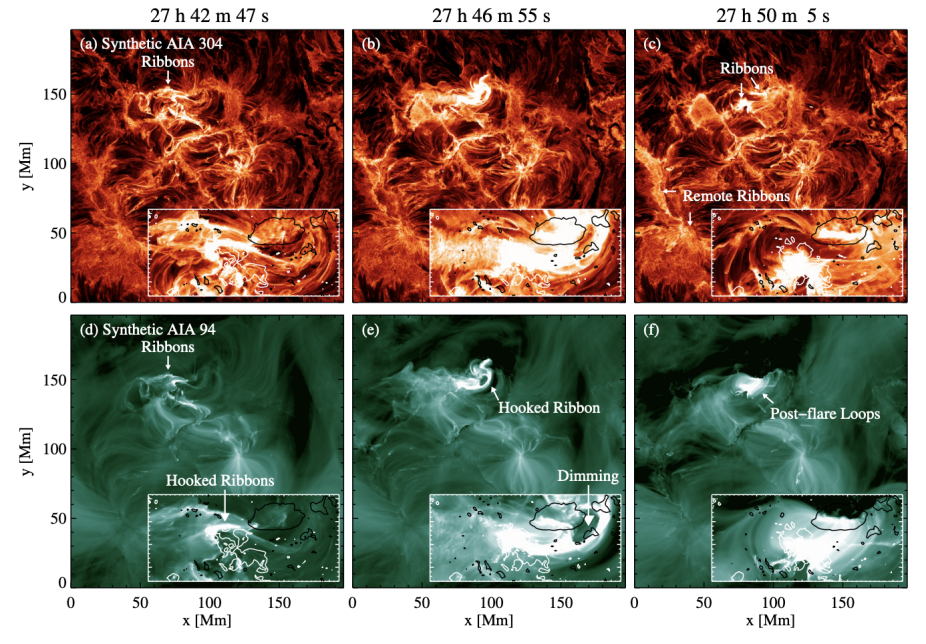ApJ: Feng Chen, Matthias Rempel, and Yuhong Fan present a radiative magnetohydrodynamic simulation that includes sufficiently realistic physics to allow for the synthesis of remote sensing observables that can be quantitatively compared with observations. We analyze the largest flare in a simulation of the emergence of large flare-productive active regions described by Chen et al. The flare releases 4.5×10^31 erg of magnetic energy and is accompanied by a spectacular coronal mass ejection. Synthetic soft X-ray flux of this flare reaches M2 class. The eruption reproduces many key features of observed solar eruptions. A pre-existing magnetic flux rope is formed along the highly sheared polarity inversion line between a sunspot pair and is covered by an overlying multi-pole magnetic field. During the eruption, the progenitor flux rope actively reconnects with the canopy field and evolves to the large-scale multi-thermal flux rope that is observed in the corona. Meanwhile, the magnetic energy released via reconnection is channeled down to the lower atmosphere and gives rise to bright soft X-ray post-flare loops and flare ribbons that reproduce the morphology and dynamic evolution of observed flares. The model helps to shed light on questions of where and when the a flux rope may form and how the magnetic structures in an eruption are related to observable emission properties.

Synthetic AIA 304 ˚A and 94 ˚A channel images from the viewpoint at the top of the domain. Large panels show the whole horizontal domain, while the inserts present a zoomed view of the source region of the eruption. Contour lines in the inserts mark Bz= ± 1500 G.